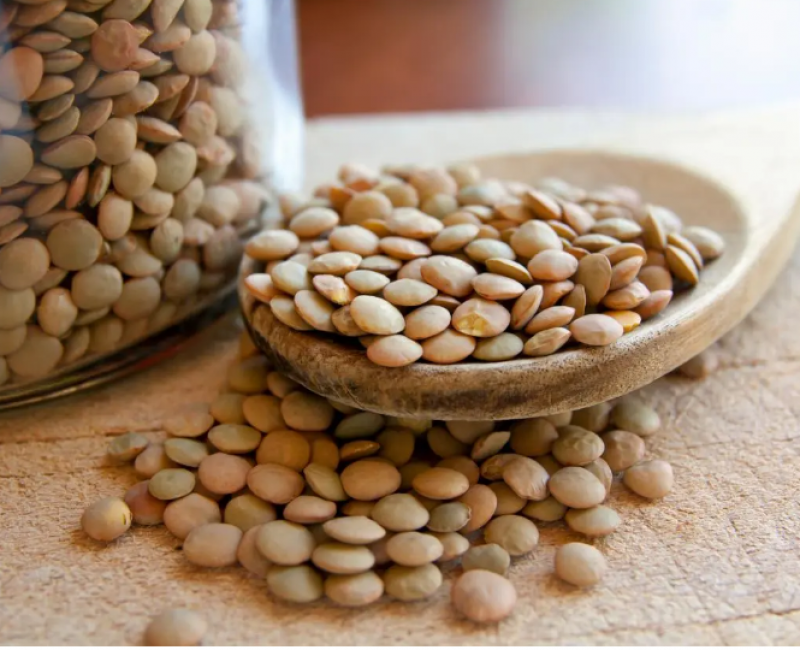Lentils belong to the legume family. They resemble a tiny bean, grow in pods, and come in red, brown, black, and green varieties. They also contain high levels of protein and fiber.
Lentils are relatively quick and easy to prepare, and their low cost makes them an accessible form of high quality protein for many people around the world.
In this article, we look at how lentils can boost health, investigate their nutritional content, and look at ways to incorporate them into a balanced diet.
Benefits
Consuming all types of plant based foods has associations with a reduced risk of many lifestyle-related health conditions.
A 2019 studyTrusted Source in the Journal of the American Heart Association found that people who eat more healthful plant foods have a lower chance of dying from cardiovascular disease and all causes.
Plant based foods often provide a wide range of fiber, vitamins, and minerals, and may contain antioxidant properties. Antioxidants work against free radicals, which are compounds in the body that may contribute to inflammation and cancer.
Heart health
Lentils are a plentiful source of fiber, folic acid, and potassium. These nutrients all support heart health.
According to the American Heart Association (AHA), increased fiber intake can reduce levelsTrusted Source of low density lipoprotein (LDL) cholesterol, or bad cholesterol.
Not only does fiber have links to a lower incidence of cardiovascular disease, but it might slow the progression of the disease in high risk individuals.
Lentils add essential vitamins, minerals, and fiber to the diet. They also provide protein and are an excellent replacement for meat in meals.
When a person replaces meat in the diet with a high fiber food, such as lentils, they decrease their risk of heart disease.
Studies have found that the potassium, calcium, and magnesium in lentils can decrease blood pressure naturally. Foods high in these minerals form a key partTrusted Source of the DASH eating plan.
The National Heart, Lung, and Blood Institute (NHLBI) recommend this diet for bringing down blood pressure.
According to the National Institutes of Health (NIH), lentils are one of the best food sourcesTrusted Source for potassium.
Pregnancy
- Lentils provide a large amount of folate.
Folate is critical for preventing neural tube defectsTrusted Source in newborns.
This essential vitamin can also reduce the risk of gestational diabetes. A 2019 study of 14,553 pregnant women found that those who took more folate during pregnancy were less likely to develop gestational diabetes.
The Centers for Disease Control and Prevention (CDC) recommend that females of childbearing age consume a minimum of 400 micrograms (mcg)Trusted Source of folate or folic acid every day.The CDC advise that women increase intake during pregnancy and breastfeeding.
Cancer
- Lentils also provide selenium.
Selenium may decrease the rates that tumors grow. It may also improveTrusted Source a person’s immune response to infection by stimulating the production of T cells. T cells kill disease.
The NIH note that selenium may help reduce rates of colorectal, prostate, lung, bladder, skin, esophageal, and gastric cancers.
However, scientists must carry out further research into the cancer preventing benefits of selenium, as studies on the mineral have, so far, produced mixed results.
A 2019 meta-analysisTrusted Source of 405 articles suggests that fiber may also have links to a lowered risk of colorectal cancer.
Fighting fatigue
Iron deficiency is a common cause of fatigue. Not getting enough iron in the diet can affect how efficiently the body uses energy. There are two types of iron: heme and nonheme.
Plants provide nonheme iron, and lentils are a particularly good source.
Meat and fish provide heme ironTrusted Source.
Nonheme iron is an essential form of iron for people who do not consume meat for health or other reasons. However, the body cannot absorb nonheme iron as well as heme iron.
So, try combining it with vitamin C rich foods, such as citrus, berries, and peppers, which will improve absorption.
Digestion, regularity, and satiety
Adequate fiber intake serves as an important factor in weight loss by functioning as a “bulking agent” in the digestive system.
Fiber in the diet helps to increase the feeling of fullnessTrusted Source and reduce appetite. This can reduce a person’s overall calorie intake.
The high fiber content in lentils also helps keep the digestive tract healthy, which in turn, prevents constipation and promotes regular bowel movements.
Types
There are three main types of lentils in the United States. These include:
Brown lentils: These have a mild, earthy flavor, hold their shape well, but will become mushy when overcooked. These work great in soups and as a stand-alone side. They range in color from light brown to black.
French green, or Puy, lentils: These have a peppery taste and a crunchy texture that can make for a satisfying salad.
Red lentils: These are common in Middle Eastern or Indian cuisine and are actually brown Massor lentils after the removal of their hulls.
Other types include black Beluga lentils, which resemble caviar, and are more expensive. White lentils, which are black lentils without the hull, and Macachiados lentils, which have a distinctive strong, nutty taste and often feature in Mexican dishes.


































































































